by Ang Yik Han
Cheok Hak Leng (石学能) died in 1929 at the age of 34. His father was a rice merchant and he studied in Chong Cheng School. After leaving school, he founded Seng Cheong Sawmill with two other partners. He was the firm’s general manager.
It was mentioned in an account of his life that he joined the Tong Meng Hui in Singapore (Lim Nee Soon’s list of Tongmenghui members does not include his name, unless he joined under a pseudonym). Given that the Chinese Revolution took place in 1911 when he was only 16, he would have been a very young member.
On his tomb, a pair of couplets.
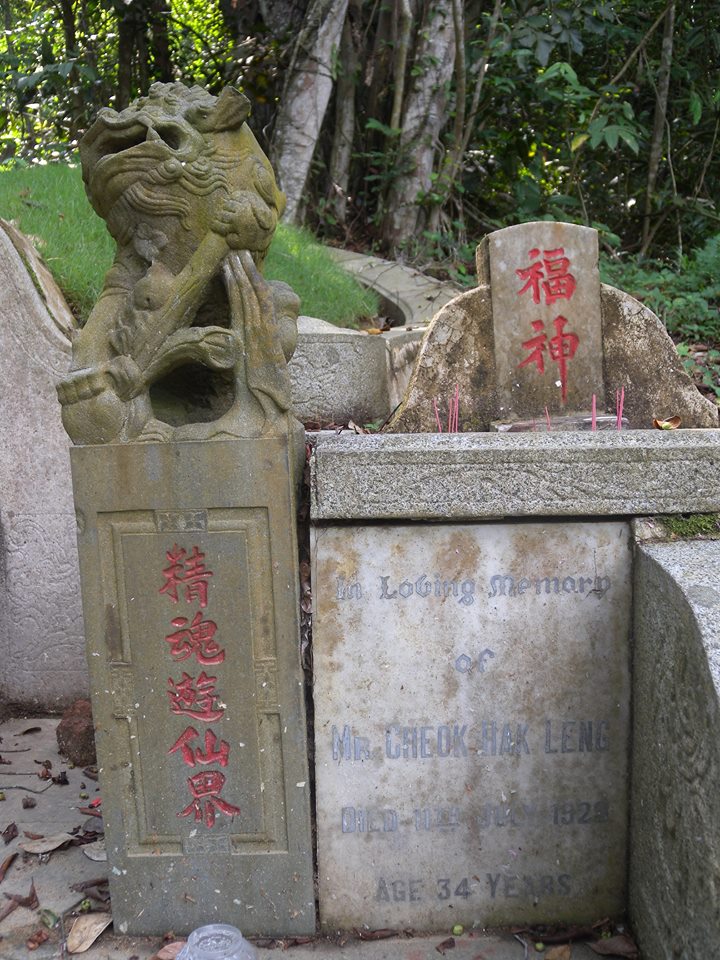
精魂游仙界 (photo Yik Han)
精魂游仙界
The immortal spirit wanders about the heavenly realms
金尸埋俗尘
The corporeal body lies buried in the mortal world
A footnote:
8 December 2012
Straits Time: Life!
Meaningful to find ancestors’ tombs
Melissa Sim’s article Finders Of Long- forgotten Tombs (Sunday Life!, Dec 2) was unique and interesting.
I had long wanted to find the tomb of my grandfather, who died in 1929 and was buried at the Bukit Brown cemetery. When the Land Transport Authority announced its plans last year to build a highway that will cut through the cemetery, my interest was reignited.
Armed with a copy of the register of burials from the National Archives, I made my way to the cemetery full of hope of locating my grandfather’s grave. How wrong I was. Bukit Brown is a massive place with no proper signs and directions, making it difficult to find ancestors’ tombstones.
It was during my second trip there in January this year, after a futile attempt the previous month, that I discovered not only my grandfather’s tomb but also those of his two brothers adjacent to his.
All this was made possible through the assistance of Mr Raymond Goh, who was featured in Ms Sim’s article.
Mr Goh said: “This is my country, it’s worth fighting for because my ancestors are here.” I echo that statement.
Bennie Cheok
—————————-
NB: Bernie Cheok is a grandson of Cheok Hak Leng
(The tomb is at Hill 3, up the track after Tan Chor Lam’s grave)
by Ang Yik Han
The tomb of 白心正 (probably Pek Sim Jia in romanised Hokkien) at Hill 3. Hailing from Anxi (安溪 – An-khoe) county of Fujian, he was the proprietor of Pek Sam Choon (白三春) – a tea importer who was one of the founding members of the Singapore Chinese Tea Importers and Exporters’ Association in 1928.
No longer in operation today, the firm was known to still exist in the 1950s when it was run by one of his sons, Thiam Hock, whose name appears on his tombstone. As Anxi county is famed for producing tea especially Ti Kuan Yin (铁观音), a sizable proportion of local Chinese tea merchants hail from that county. Some old firms founded before the war are still around today.
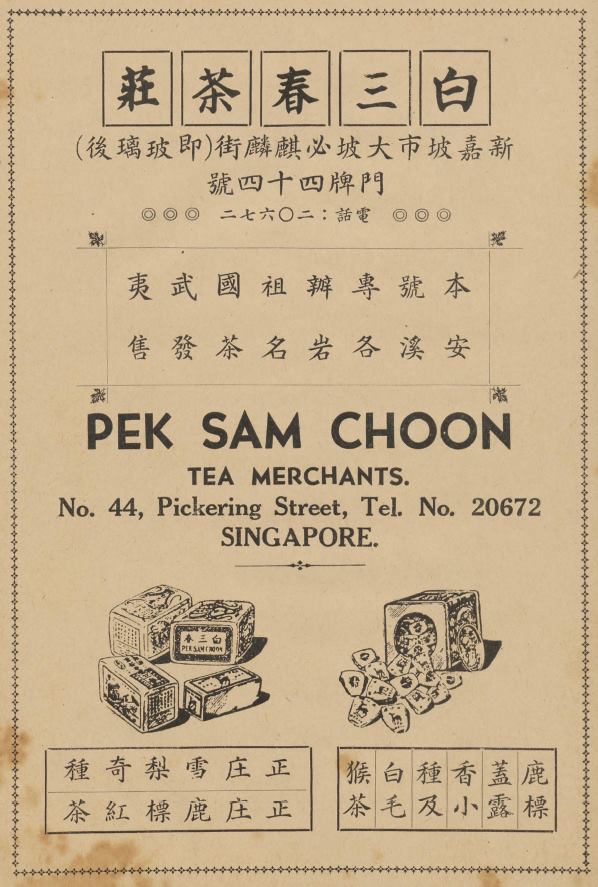
Advertisement for Pek Sam Choon in the 30th anniversary commemorative publication of Singapore Ann Kway Association 1952
Chew Chai Pin
(b. 11 November 1911 – d. 13 June 1941)
Among the 4,000 graves which will have to be exhumed to make way for the highway is that of Chew Chai Pin (# 1253)

The Grave of Chew Chai Pin ( photo credit : The Bukit Brown Documentation Project)
Chew Chai Pin was one of three founders of the Chinese High School in Batu Pahat. Unlike the other prominent Chinese men who contributed to the school, Chew was not well known then in the community. He held the concurrent position of director and teacher of the Ayer Hitam School. But he was soon to answer a higher calling.
On March 6, 1940, Chew went to China from Singapore to Yangon and China, to visit and give moral support to the Nanyang volunteer mechanics and drivers, as well as civilians and troops. The Nanyang Volunteers were recruited and trained from South East Asia, to transport war and logistic supplies through the notorious China-Burma highway to sustain China’s war effort against the invading Japanese. Chew represented Batu Pahat as part of a deputation comprising of representatives from the overseas Chinese communities of South East Asia.
But on March 29 1940, the vehicle he was in overturned and he sustained serious injury to his spinal cord. He was warded at a hospital at Xiaguan (Yunnan) while the rest of the deputation proceeded to their destinations. He was visited by none other than Tan Kah Kee, who was instrumental in galvanizing the support of the overseas Chinese in Nanyang (South East Asia) for the second Sino-Japanese War. Tan made arrangements to have Chew sent to Yangon for treatment as the doctors in Xiaguan were unable to heal him. Chew’s legs were numb and he could not walk for more than a year. Chew also received a letter of consolation from the Commander-in-Chief of the war and leader of the Kuomintang , Generalissimo Chiang Kai Shek.
On March 4th of 1941, a year after his accident, an arrangement was made for him be transported to Singapore for treatment. Just when many thought Chew would recover, he died in Singapore on June 13, 1941 at 0615 hours. It was said that his funeral in Singapore was attended by more than 400 people. He was hailed in both Singapore and Malaysia as a patriot who sacrificed his life for China.

An obituary in the Nanyang Siang Pau to the memory of Mr Chew Chai Pin proclaims: “He Died for his Country”
On his deathbed, he urged his compatriots to spare no effort for China’s salvation. He said:
“I am ashamed to have done nothing in service of my country. How can I die without doing anything for the motherland? I must do something for the nation when I come back in another life.” Chew Chai Pin.
Chew was just 30 years old when he died.
Tan Kah Kee wrote in his memoirs that when the deputation left Singapore by ship on the 6th of March, it was sent off by a crowd in high spirits. Only Chew’s mother and wife were weeping. Somebody observed to Tan, that the deputation would be away for only 3 months and it was an honour to be a delegate, so even though one could excuse Chew’s mother as she was of an older generation, his wife who was educated and a teacher was showing too much emotion. After seeing Chew in hospital six months after his accident, when he could not be cured by the doctors there, Tan Kah Kee remarked that it seemed the mother and wife had been prescient of what was to come at the point of parting.
Chew was born on 11/11/11 in the Hokkien Province, Tong An County, Au To village. He married in November 1937, and was childless at the time of his death. After he passed away, his parents adopted a son on his behalf.
postscript : Chew Chai Pin’s grave has been claimed.
***
Source: From the blog of 沈志堅’who is a teacher at Chinese High School in Batu Pahat. (Translated by Fabian Tee)
Additional information from the Memoirs of Tan Kah Kee
The Lim Hock Seng Family
An update:
On the morning of Sunday, June 22 ’14, Raymond Goh was on his usual weekend exploration of Bukit Brown when he came across the tomb of Ngo Kim Neo who died young at 22 years old in 1927.
On her tomb was inscribed, she was the wife of Lim Hock Seng (see the original story below) and she left behind 4 children, Sons: Lim Cheng Chuan and Lim Cheng Ean; Daughters: Lim Khoon Neo (Lucy) and Lim Geok Kiat.
What was intriguing was the name of Lim Cheng Ean which was included in the inscription as her son, as he was born in 1934, 7 years after the death of Madam Ngo Kim Neo.
We emailed the daughter of Lim Cheng Ean to inform her of the find and if she could throw some light on the matter.
This was her reply:
“I have managed to gather some brief knowledge about Ngo Kim Neo from my mother. Apparently Lim Hock Seng married 2 sisters. The first died very young without children and her grieving parents offered their second daughter, who must be Ngo Kim Neo, to him. She had 2 daughters and then sadly died giving birth to my father’s older brother, Lim Cheng Chuan, who was known in the family as the ‘Tiger Baby’ because he ‘ate his mother while being born’ (1927 was indeed the year of the tiger) . I’m not sure if this is a Chinese superstition, or just a Lim family ‘fable’. My father will be so moved to see the photo that I am posting to him today. I doubt he has ever seen the grave, or his own name credited as her son on the tombstone. His sister, Lucy (Lim Khoon Neo), was very close to him ” Gillian Mendy nee Lim, 23 June’2014
Gillian further explained that, her father’s (Lim Cheng Ean) mother was Lim Hock Seng’s third wife, Khoo Ah Tho, brought from Penang to marry him and look after the 3 young children left behind by Ngo Kim Neo.
From Gillian’s information, we gleaned that after Lim Cheng Ean was born, the tombstone of Madam Ngo was replaced to include his name to acknowledge Madam Ngo as his mother. We are not sure what customary practice led to this, or maybe it was a husband’s last loving tribute to the wife who bore him 3 children before she passed away at childbirth at the tender age of 22.
In sharing with us the close relationship her father had with his half sister, Lucy Lim Khoon Neo, Gillian attached an article on her aunt’s wedding and another line of family connection was revealed. Lucy Lim married Cheong Thiam Siew, Chairman of Frank Knight, who was the son of Cheong Hock Seng, and grandson of Cheong Koon Seng Her husband came from an illustrious and blue-chip line of property auctioneers.
And finally Gillian shared that her father who was in a fragile state of health when she first wrote to us in in January of this year, has improved and just celebrated his 80th birthday. The family put together a scrap book of his Lim ancestors, and the photos we had sent earlier of his father’s and his grandparent’s graves at Bukit Brown was the centerpiece of the book.
*****
All Things Bukit Brown received an email this morning (14 January) addressed to Raymond Goh. It was from Gillian Mendy (Lim) from London, asking if her grandfather’s Lim Hock Seng’s grave was affected by the highway. Her email read:
“Your Bukit Brown website is incredibly informative and interesting. We have only just discovered about the planned road works through the cemetery.
My grandfather is buried at Bukit Brown and we are trying to find out if his grave is affected by the road project. The family now live in England. If it is affected then we would come to Singapore to claim the remains.
On 2nd January, 2014, June Tan witnessed and photo documented the exhumation of her grandfather, Ong Kim Soon. She also shared with us the testimonial of how a promise was fulfilled to carry on the lineage of another family. It speaks to men and women of honour and ties of kinship which live on till today.
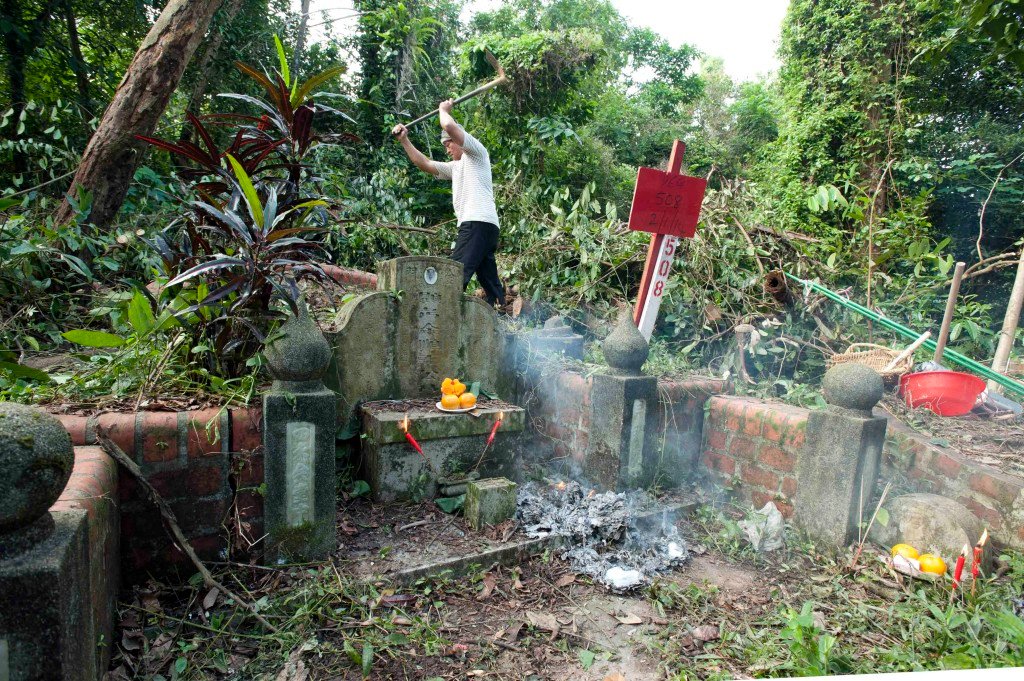
The exhumation of Ong Kim Soon begins, after the family conducted their pre- exhumation rituals (photo June Tan)
***
By June Tan
My grandfather was an ordinary man. He worked hard to make ends meet and was an honest man of principles. When he passed away at the age of 47 , he left behind his wife & 6 children aged between 6-22 years old then.
The story I want to share of my grandfather has to start from my great great grandparents.
My great great grandfather Ng died at a very young age. He was in his 20s then. He left behind his wife but no descendants. The women of that era usually did not remarry if their husband passed on. It was deemed to be their duties to take care of their in- laws .
However, my great great grandmother was a young lady in the prime of her life at that time. Her mother- in- law decided that she should not stay as a widow and allowed her to remarry. She, however, set a condition for the man (suramed Ong) who was to marry her- that the first son born by them had to take the surname “Ng” (黄). As a gratitude to the old lady, they readily agreed.
Soon after, my great grandfather was born and he took the Ng surname. However, great great grandfather Ong soon fell very ill and with his wife they were unable to produce a 2nd child. Their son, my great grandfather had no option but to reinstate his surname to Ong in order to perpetuate the Ong family line.
The older generation is a generation of principles. It was resolved that the next male child born in the family will carry the surname of Ng to honour the promise of my great great grandparents.
Years later, my grandfather was born and he adopted the “Ng” (黄) surname. In fact, of the 3 sons born in that generation, my grandfather and his 2nd brother took on the Ng surname as a gratitude to the Ng family.
At age 47, my grandfather passed away. All that he left behind was a meagre sum of S$24. The family was faced with the task of paying for a decent burial place.
Seh Ong Sua (which adjoins Bukit Brown) was the only cemetery with free burial grounds available for the Ong descendents . My grandfather’s brothers, my grand uncles, approached the person in charge of the Ong Clan then. However, only descendants of the Ong clan could be buried there. After hearing the origins of my grandfather’s surname, the Ong clan agreed to accord him a burial ground in Seh Ong on condition that that he had to use his Ong surname on the headstone of his grave.
Hence, the surname on his tomb is Ong (王) whereas his children will continue to take the Ng surname.
For these reasons, my great grandmother had “set” a rule for my mum’s generation that they are allowed to marry Ngs’ but not Ongs’ as that is the origin of their bloodline.
***
A few photos from June Tan’s album of her grandfather’s exhumation. The coffin was fully intact and the set of bones, nearly complete. With her permission, the complete album which she has captioned as a photo essay, is available here
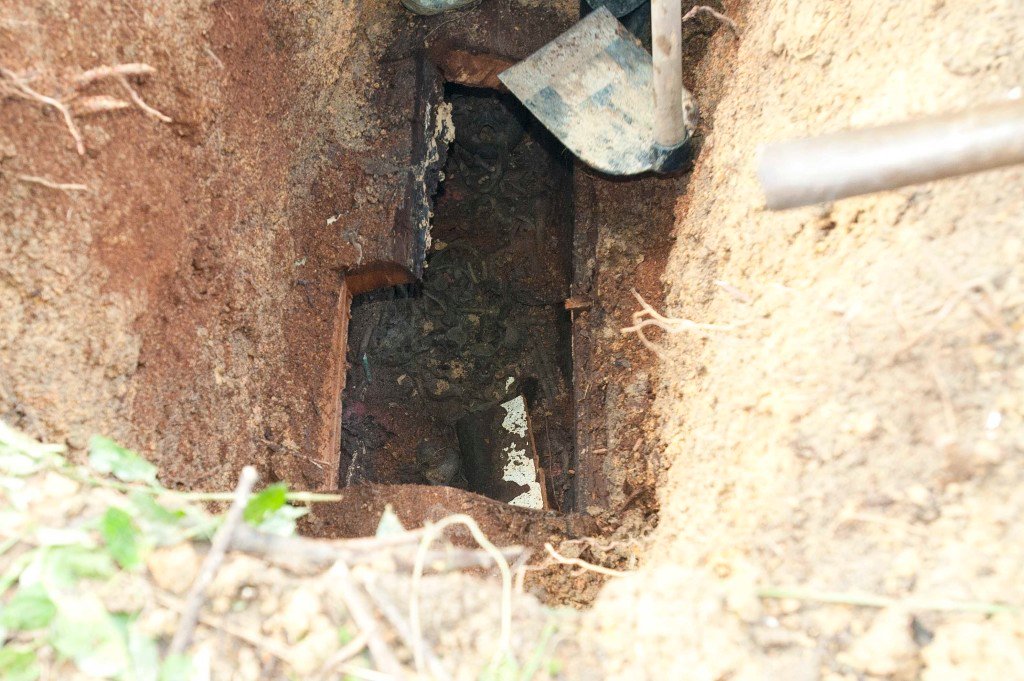
The remains after the coffin (which was fully intact) was opened with an electric saw (photo June Tan)
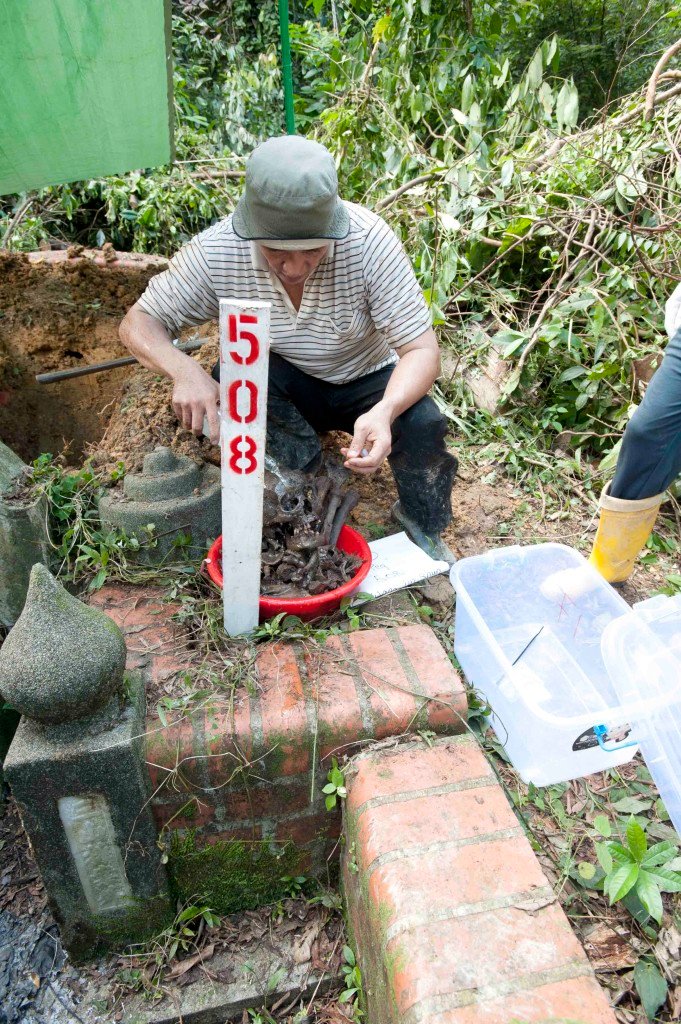
The bones are washed with white wine as required by traditional exhumation practices. (photo June Tan)
***
Ong Kim Soon has moved to Yishun Columbarium. Rest in Peace.
Editor’s note: We would like to thank June Tan for sharing her photos of her grandfather’s exhumation and her family story with us. If you are a descendant who has ancestors staked for exhumation, please share your story with us.
Email us: a.t.bukitbrown@gmail.com
You can read about another first hand account by a grandson, who witnessed his grandfather’s and aunt’s exhumations, here
by Sugen Ramiah
While exploring Hill 4, I stumbled upon a tomb of a young man, by the name of Ee Tean Choon.(E Tean Choon on tombstone)
It was very unique because the tomb was of a modern design in marble. And so I started a little research on his family in early November 2013. It was on the 31st of December 2013, while strolling with brownies Peter and Ee Hoon, that I was told that there was another art deco tomb, similar to that of Ee Tean Choon that also belonged to the Ee family, his grandparents. Here’s what I have traced of the Ee Tean Choon family tree.
Grandparents: Ee Swee Hin and Khoo Swee Yee
Ee Swee Hin passed away on the 8th September 1942 and his wife Khoo Swee Yee, on the 19th February 1955. They are buried together in Hill 5 Division B with LTA tag #1122 and will be exhumed in March.
Father: Ee Yean Keat
Ee Yean Keat was the eldest son of Ee Swee Hin and Khoo Swee Yee. He had two other siblings, Ee Yean Bee and another adopted brother – Tan Eng Yam. Born in Malacca in the year 1884, he was educated in a high school there and came to Singapore to look for a better future. He married Seow Joo Neo and had seven children. He first started work with Netherlands Trading Society in 1904. After 6 years, in 1910, he worked as a cashier with the KPM shipping company. He wanted an early retirement after 25 years with the shipping company. However, he later joined the Straits Times Press (Malaya) Ltd and officially retired in 1959 at the age of 75. He was also known as the “Grand Old Man’ of the accounts section of Straits Times Press (Malaya). He passed away on the 24th of September 1968 at the age of 84. The Obituary section in the archives indicates that he left behind 2 wives. Seow Joo Neo the mother of Ee Tean Choon, passed away on the 4th of January 1985 at the age of 102. She left behind 19 grandchildren and 16 great grandchildren. No information has been uncovered about Ee Yean Keat’s other wife.
Ee Tean Choon (E Tean Choon on tombstone)
Ee Tean Choon born in the year 1910 and was the first born of Ee Yean Keat and Seow Joo Neo of No.350 East Coast Road. He was the eldest of seven children. He married Ruby Chia Boey Neo , the fifth daughter of Mr & Mrs Chia Keng Chin of No.8 Saint Thomas Walk, on the 3rd of October 1936. Chia Boey Neo the grand-daughter of Mr Chia Hood Theam, was born in July 1914 and was 22 years old when she married Ee. They didn’t have their own children but adopted two babies -Willie Ee Kean Leong and Margaret Ee.
Sadly, Ee Tean Choon died of typhoid, on the 3rd of April 1938, at just 28 years old. He left behind a young widow and two infants, barely two years after his marriage. The two infants were then adopted by his brother, Ee Tean Cheng and the young widow returned to her parents’ house.
Inscribed on the tomb is an epitaph :
‘In the prime of his life death claimed him, In the pride of his manhood days, none knew him but to love him, None mention his name but with praise.’
I believe that the epitaph was taken from ‘The life of Rev. William James Hall, M. D.: Medical Missionary on the slums of New York, Pioneer Missionary to Pyong Yang, Korea’ 1897. It is about how Rev Hall ministered to the sick and wounded of Korea and his martyrdom. Coincidentally, both William (Willie for short) Willie and Margaret, were the names of Dr. Hall’s great grandparents.
Ee Tean Choon is buried in Hill 4 Division C with LTA tag #2612. He has been claimed by the family of his wife, the late Mdm Chia Boey Neo.
Brother : Ee Tean Cheng
Ee Tean Cheng was actively involved in many athletic associations such as the Useful Lads Badminton Party, Horlicks Badminton Party and was elected as vice president of the S.A.S.U (Singapore Armature Sports Union) in 1940. The tournaments, training and meetings were often held in the badminton court of the Ee’s residence at East Coast Road. He worked for Ford Motors and married to Ong Lian Neo Nellie on the 15th December 1940. Unfortunately, she passed away on the 26th October 1941 while in labour, both mother and child didn’t survive. She was buried in Bukit Brown and Raymond Goh has a blog post on her life here
Ee Tean Cheng had a second marriage to Lily Oon Siok Neo. They had a son, Winston Ee Kean Leng and also adopted the late Ee Tean Choon’s children – Willie and Margaret. He had five grandchildren. He passed away on 3rd April 1999, coincidentally the anniversary of his brother, Ee Tean Choon ( 3rd April 1938)
Brother: Ee Tean Chye
Colonel Ee Tean Chye was the first Commander of the Singapore Air Defence Command and in 1972, the first Chief of Air Force of the Republic of Singapore Air Force. He has three children, Patricia Ee, Laura Ee and Christopher Ee.
Son: Willie Ee Kean Leong
Willie Ee Kean Leong was the director of Sankyo Seiki Singapore Pte Ltd. He married Lim Eng Hong, eldest daughter of Mr Lim Kim San, former cabinet minister and first chairman of HDB. They had two children, Ee Kuo Ren and Ee Yuen Ling.
Daughter: Margaret Ee
Margaret Ee married Mr Richard Png and had two children, Dr Kenneth Png and Keith Png.
Postscript : Unfortunately both grandparents and grandson will be moving house to make way for the new highway. However both grandparents and grandson will be interned in the same block in Choa Chu Kang Columbarium. This is just another story of another ordinary family that has contributed to this country. May they rest in Peace.
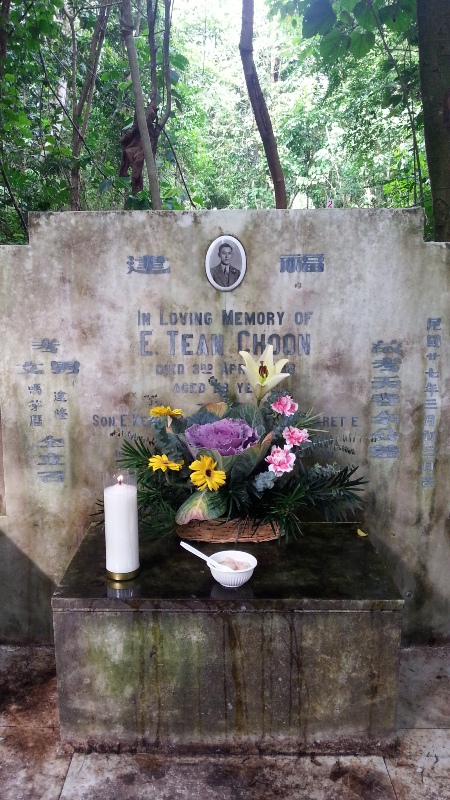
Offerings for Ee Tean Choon on the day of the Winter Solstice 21 December 2013, prepared by brownies Choo Ai Loon and Sugen Ramiah (photo Sugen Ramiah)
Sugen Ramiah is a teacher by training and his interest includes observing and documenting Chinese festivals and rituals conducted by temples. This is his first foray into researching family trees.
Read his blog posts on Salvation for Lost Souls here and here
References for Ee Family
The life of Rev. William James Hall, M. D. : medical missionary to the slums of New York, pioneer missionary to Pyong Yang, 1897. (E-book) Emmanuel College Library, Victoria University
Announcement. (1936, June 23). The Straits Times
Tean Cheng-Ong. (1940, December 16). The Singapore Free Press and the Mercantile Advertiser
Deaths. (1941, October 26). The Straits Times
Cashier, 75, Retires for Second Time. (1959, December 31). The Singapore Free Press
Deaths. (1968, September 25). The Straits Times
Deaths. (1985, January 5). The Straits Times
Condolences. (1994, September 4). The Straits Times
Deaths. (1999, April 4). The Straits Times
Deaths. (2000, June 20). The Straits Times
The Air Force, Singapore : Republic of Singapore Air Force, 1988
Controlled Growth Restriction Policies For Certain Closed Food-Chain Systems by Patricia G. M. Ee 1992. Simon Fraser University, April 1992.
18th November, 2013
From Raymond Goh:
Today, the tomb keepers helped to clear the thick vegetation around a cluster of old graves in Hill/Blk 2, believed to be relocated from Tiong Bahru in the late 1920s due to development, thereby revealing more tombs previously hidden among thick vegetation. Some of these old graves are affected, while some are not due to the angle of the road project which slices this cluster into half. One pioneering immigrant, that of the mother of Chee Yam Chuan has been found in this cluster. We believe other pioneers could be uncovered soon.
Read about how Raymond identified Madam Chee Kim Guan here
Seeing the cleared tombs for the first time inspired Claire Leow to pen these lines for these pioneers, who arrived about the time of Sir Stamford Raffles, making them the earliest immigrants of recent history.
The Sentinels of Bukit Brown
We stand
Sentinels of Bukit Brown
Watched this land we called Sin-chew (星 洲) from afar
Put down roots, rebuilt our lives,
Cajoled our families to join us.
We, the sinkehs, arrived.
Farewells aplenty in our lifetimes
To family, to China.
Here in our new home, to our former burial grounds which looked after us,
As we made way for our descendants, and for more sinkehs.
Goodbye Tiong Bahru, hello Bukit Brown.
Years have passed. Like a gentle breath. Like the wind.
Bombs came, new inventions we did not yet know.
Shouts of languages we did not fully understand.
In death, others whispered to us that which we did not witness
The Japanese came with shouts of Banzai! The British scrambling in the undergrowth to hide amongst us.
Then peace and quiet again.
Roots grew around us, sheltered us.
And we hosted the birds and monkeys and spied an occasional dog. Hid a few snakes in our time.
We enjoyed the distant voices of children at play.
We, the sentinels of Bukit Brown.
And now,
Time for more farewells.
Our friends and neighbours in death,
Long have we stood together.
Decades have come and gone and among many farewells, we never expected the dead would be parted.
Not like this.
Ong, I see you over there. Chew, you look bright and clean with the grass trimmed. Lim, I never knew you had that many children!
So many years, and now, not enough time!
We don’t have time left to get to know each other better.
We thought we had eternity…
We thought we were the sentinels of Bukit Brown.
All we had was time.
Come, let us not tarry.
Lets get to know each other better.
Before our final farewell.
We who know how to depart and how to find new homes, come.
Footnote:
“Sin Chew” is a sobriquet for “Singapore” popularized by Nanyang literatus Khoo Seok Wan (also buried at Bukit Brown and to be exhumed for the highway). Singapore is an island surrounded by the sea, and with vessels and boats large and small anchored around it; the glitter of artificial lights at night are like a crown of illuminated stars (“星”) when viewed from afar. “洲” (zhou, island) and “舟” (zhou, boat) are homonyms: while the boat lights are like stars, those on the island are like the Big Dipper to accentuate the constellation. This is why the term “Sin Chew” is widely known by folks here and afar.
(Liang Shao Wen, “Nanyang Travels”, p. 62, circa 1920s, translated by Lai Chee Kien)
Related posts:
A Brief History: Walk of Fame, Darkly
Dateline 22 October 2013
Spotted at Bukit Brown by Raymond Goh while bush bashing, a grave with 4 statues, each carrying a child.
- The tomb with the 4 statues belong to a Mdm Fong (photo Raymond Goh)
Pat SG from the facebook group Heritage Singapore Bukit Brown cemetery has identified them as Baby Buddha in Old Monk’s Arms, symbolising:
Infinity ∞ : Beginning ⇔ End ]
1) BIRTH/ EXISTENCE
Baby Buddha statue (Japan):
http://www.travelwithval.com/…/2012/01/Baby-Buddha.jpg
2) CONSCIOUSNESS
Baby has the sign of the snake (Naga) on his scalp. (Baby appears to be dozing, but how do you know he isn’t meditating & contemplating ?)
Note that the mediating adult Buddha is typically depicted as being surrounded by snakes, or with the Naga sheltering & protecting him from the elements.
* Buddha Statue (Mahabodhi Temple, Bodh Gaya):
http://cdn2.biharprabha.com/…/uploads/2011/07/muchlind.jpg
3) CRADLE OF BEGINNING OF CYCLE
Old (& hopefully wiser) monk is the custodian of enlightenment & wisdom-in-waiting. This is akin to how the new moon is cradled in the old moon’s arms during the the start of every lunar cycle (a process that repeats itself continuously).
* New moon in old moon’s arms: http://astrobob.areavoices.com/…
4) CYCLE OF EXISTENCES
http://en.wikipedia.org/…
* Saṃsāra = cyclic existence, “continual repetitive cycle of birth and death [arising] from ordinary beings’ grasping and fixating on a self and [on] experiences”
5) CYCLE OF BUDDHAS
http://www.dhammawiki.com/index.php?title=28_Buddhas
“The Buddha was not the first Buddha, nor the last.”
http://en.wikipedia.org/…
“The 28 Buddhas described in the Buddhavamsa are not the only Buddhas believed to have existed. Indeed, Gautama Buddha taught that innumerable Buddhas have lived in past kalpas.”
)
Dateline 19 October 2013
The Story of the Rickshaw Pullers Strike and a Man called Low Nong Nong
(compiled with research by Raymond Goh and a Pat Sg, a member of the Facebook Group -Heritage Singapore Bukit Brown Cemetery)
Today, Raymond Goh located the tomb of rickshaw puller Low Nong Nong who died during a confrontation between striking rickshaw pullers and the police. In the clash which occurred on 17th October 1938, Nong Nong lost his life, and there were no witnesses to his death.
The rickshaw pullers were striking for lower rents of their rickshaws from the owners.
“EXCERPT: {{{ Low Nong Nong was found dying from a fractured skull, face down on the side of the street emptied of his comrades. His death sent reverberations through the rickshaw districts, making pullers more determined than ever to force the owners to come to an agreement on their terms.”
“His funeral the same day was an unnerving, demonstrable display of strength and solidarity. Three thousand men solemnly followed the lorry bearing his coffin to BUKIT BROWN CEMETERY to a pauper’s grave, and, as the police anxiously stood by and watched, one of the longest funeral processions in Singapore’s recent history, stretching from Wajang Satu to Newton Circus, passed.” (Source: Rickshaw Coolie: A People’s History of Singapore, 1880-1940)
The community of rickshaw pullers saw Low Nong Nong as a martyr to their cause. On his tomb his epithet reads:
He died for the public, his death is as heavy as Taishan, tomb erected by his fellow rickshaw pullers
“Taishan” in this case is 泰山, Mt Tai, one of the sacred mountains of China. (from Jason Kuo)
Background to the rickshaw pullers strike : The Lot of the Coolie
Many rickshaw pullers had been on prolonged strike during that period (04 Oct – 15 Nov 1938), & thus had no earnings. Low Nong Nong himself died on 17 Oct 1938 — penniless & w/o any kin in Singapore.
The community of rickshaw pullers had been periodically unemployed from 1928 onwards & throughout the post-Depression 1930s. During this period, the colonial govt had been reducing the no. of rickshaw licenses so as to encourage the use of the motorcar.
In response, profit-seeking rickshaw fleet owners (the “siong thau”) took the opportunity to hike up the rental fees. Fleet owners also made rickshaw pullers contribute part of their earnings to the mandatory “China Relief Fund”, which purportedly assisted countrymen who were suffering “deep water and scorching fire” back in China.
Low Nong Nong was probably described as a martyr by his rickshaw brethren, because:-
Despite being hungry & desperately in need of money, he dutifully observed the rickshaw strike, as previously agreed upon amongst the pullers at the 小坡 (xiǎo pō, “Small Town”) area of town.
He lost his life while participating in a rescue group that had attempted to free a Hockchew rickshaw puller, who was arrested by the police during an earlier confrontation at around 11am on 17 Oct 1938.
Background on the incident : The Betrayal
The morning altercation had occurred because Low Ah Law, a Henghua puller, had unilaterally disregarded the rickshaw strike, & blatantly plied his rickshaw on the streets of 小坡 (“Small Town”) — ie. the side of Sg River where most of the rickshaw pullers were supportive of the ongoing rickshaw strike.
Subsequently, the Henghua puller was confronted & restrained by a “Hockchew crowd” of fellow rickshaw pullers at Victoria Street. The police intervened & one of the Hockchew pullers was consequently arrested.
The “rescue” clash between the Hockchew rickshaw pullers & the police occurred during the afternoon of the same day at the junction of Arab & Victoria Streets. Police reinforcements were deployed & “strong-arm measures” were used to subdue the angry “rescuers”.
It was in this clash that Low Nong Nong was found lying face-down & dying from a broken skull on a street that had been cleared out by the police.
In a sense, Low Nong Nong — who was already famished & simply getting by his day — died alone on a street at 小坡 (“Small Town”), because a fellow 小坡 & Foochow prefecture rickshaw puller had betrayed his brethren by not observing the strike.
Meanwhile, the 大坡 (“Big Town”) rickshaw pullers (including the majority Hokkiens) — who had refused to support the strike — merely looked the other way.
* Account of Low Nong Nong’s death on the afternoon of 17 Oct 1938 from ‘Rickshaw Coolie: A People’s History of Singapore, 1880-1940’ (James Francis Warren): http://goo.gl/E7PEif
EXCERPT: {{{ Unemployed, hungry, and desperately in need of money, [Hockchew puller Low Nong Nong] had visited Seah Toon Tan, a Hockchew friend, that morning. He borrowed a dollar from him and left his house in Geylang at about 9 am, without ever having discussed the strike.
The trouble leading up to his death began when a crowd attempted to restrain a Hengwah, Low Ah Law, who had ventured along Arab Street with his rickshaw. At the junction of Victoria Street he was assaulted by a Hockchew crowd.
Police had barely arrived in time to rescue Low Ah Law and arrest one of the assailants. At once, a new crowd of around 400 began to take shape to rescue the captured puller.
Some were armed with fighting sticks, rickshaw shafts, bottles and bricks, and among them was Low Nong Nong. A clash ensued with the police. Shouts of “pah, mata, pah” (“strike, police, strike”) rent the air, as the crowd of pullers slowly closed in, injuring several constables with wooden clogs, poles and stones they hurled at them.
The situation was desperate with police injured and rickshaws wrecked all over the adjacent streets, until reinforcements arrived. Strong-arm measures were used to control and eventually disperse the crowd. Low Nong Nong was found dying from a fractured skull, face down on the side of the street emptied of his comrades. }}}

books.google.com.sg
Low Nong Nong can be found in blk 3, Div 7, no. 120A @ the pauper’s section (on a hillock about 200 meters from the tombkeepers shed at the foot of Ong Sam Leong family cluster)
s
Dateline 6 October 2013
A tomb with a loving epitaph was found by Brownie Simone Lee at Kopi Sua today . It reads:
A bitter grief
A shock severe
to part with one
I love so dear
My loss is great
I wont complain
But hope through God
to meet again
In memoriam
my dearly
beloved father
Gone but not forgotten
Kopi Sua – a clan cemetery – is part of the Greater Bukit Brown Complex which includes Bukit Brown Municipal Cemetery and the adjoining clan cemeteries of Seh Ong and Lao Sua. Together they have a combined total of 200 tombs
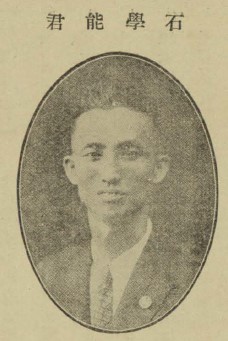




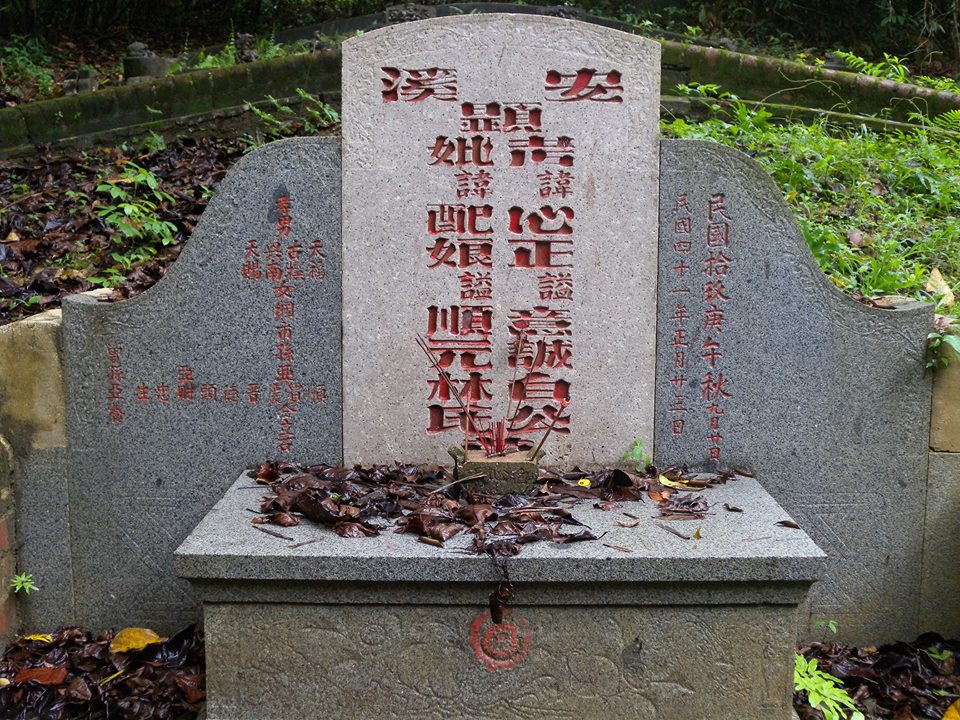
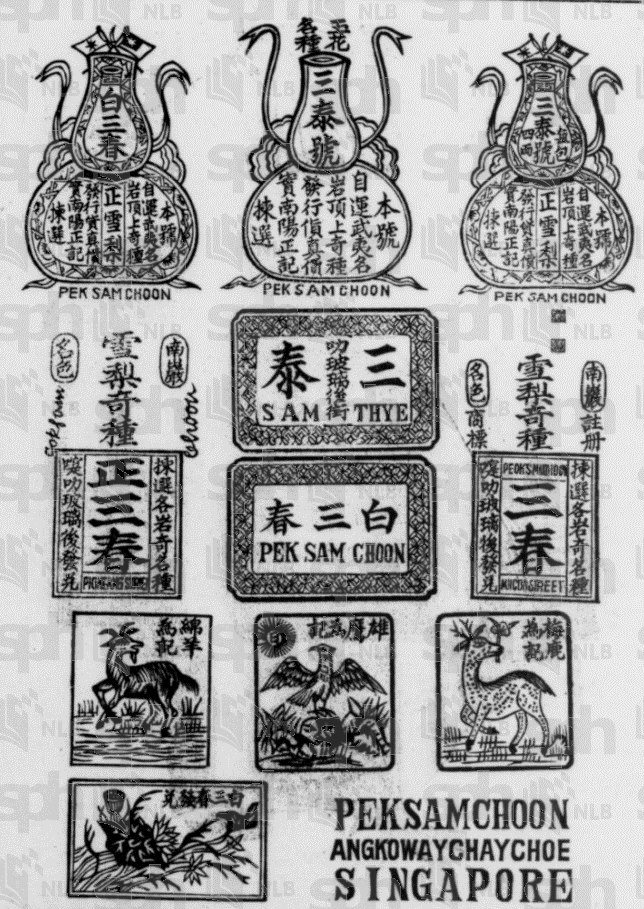

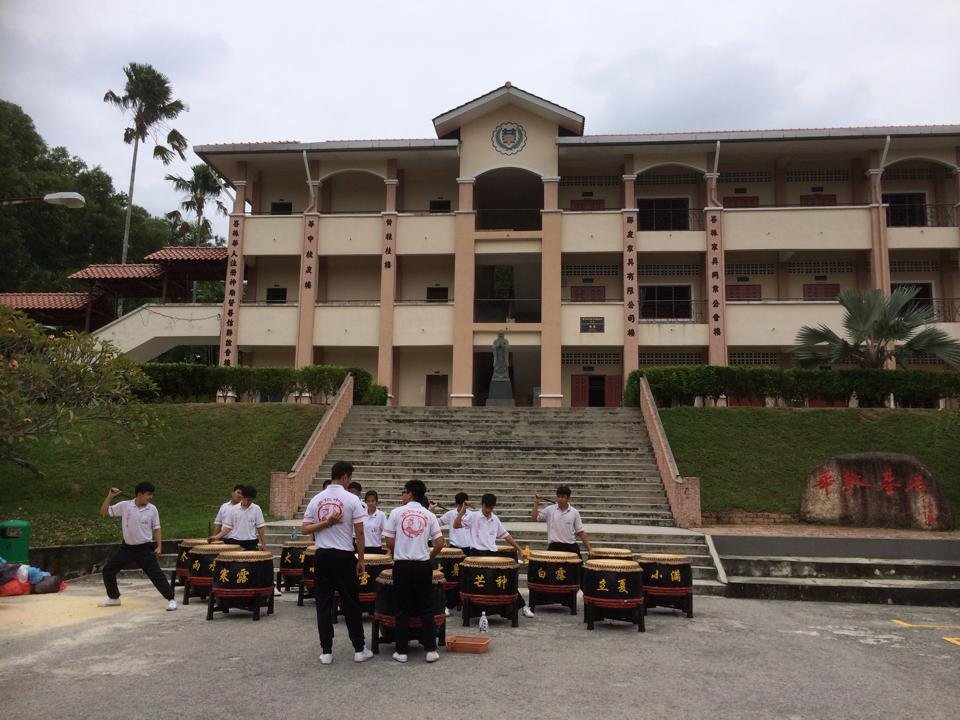



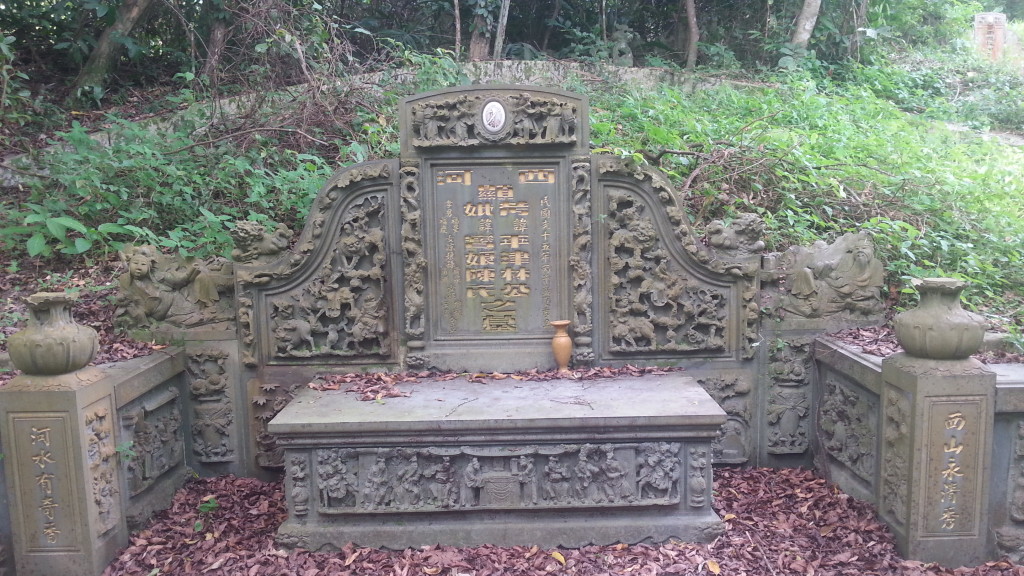

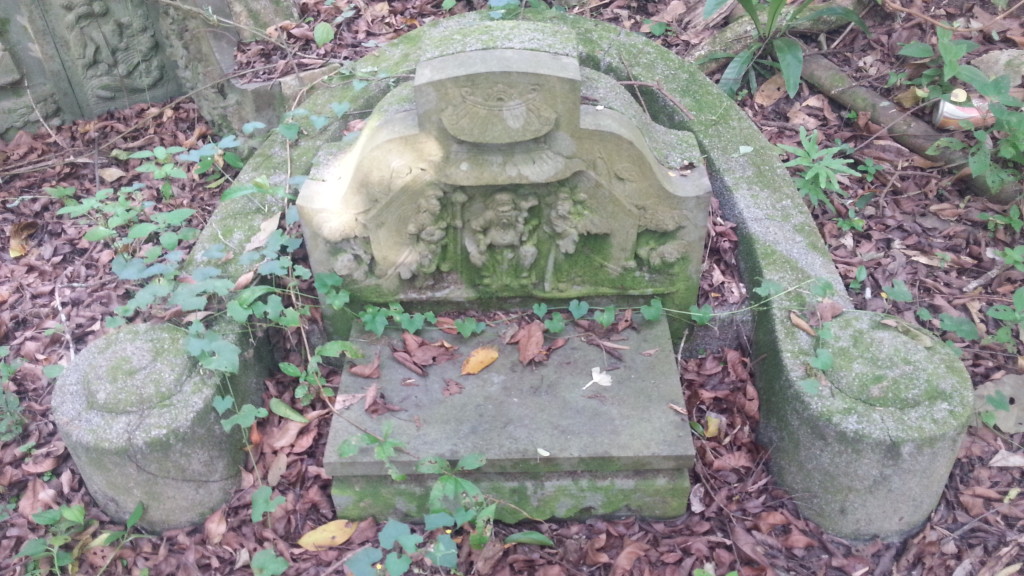
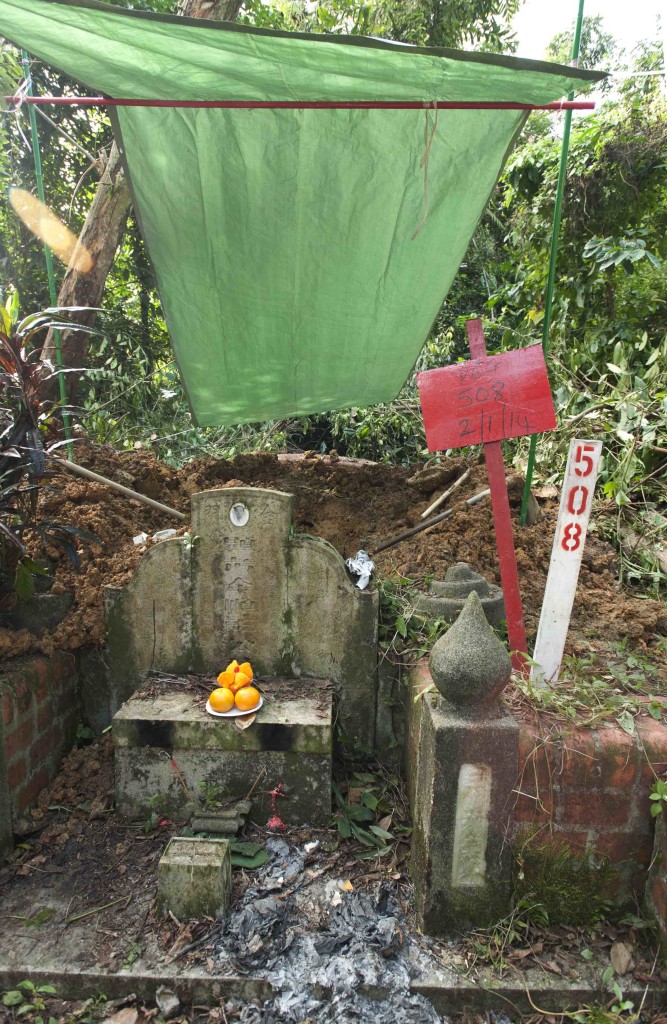
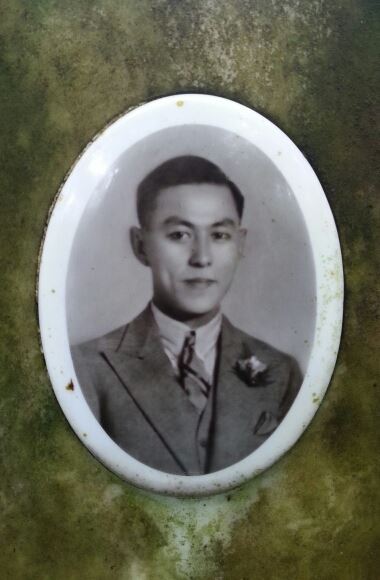
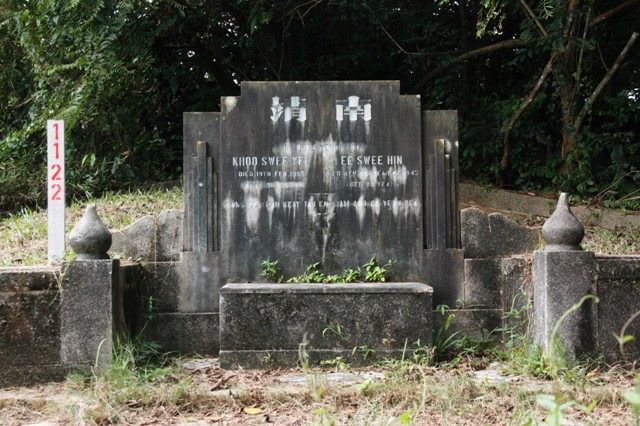
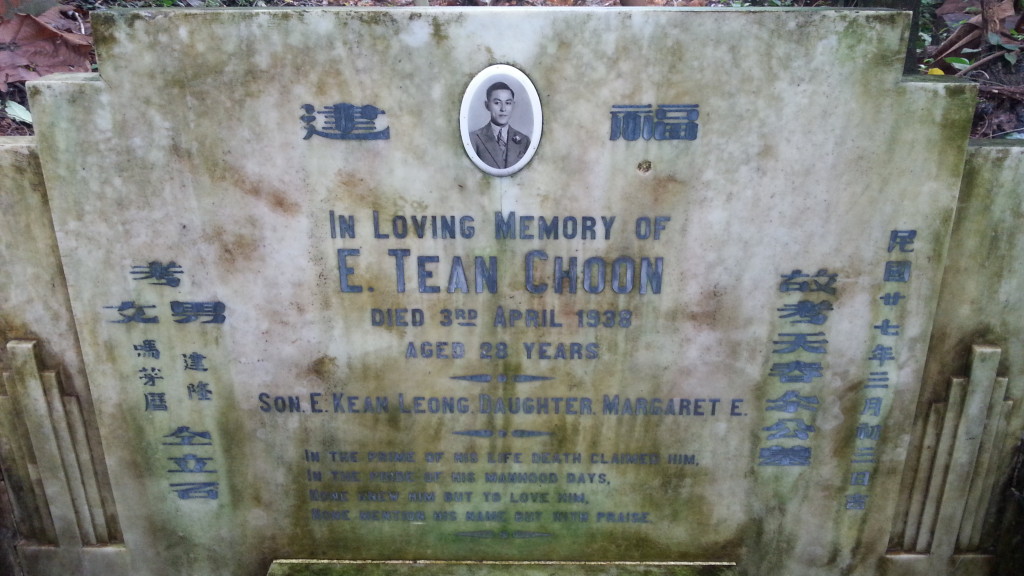
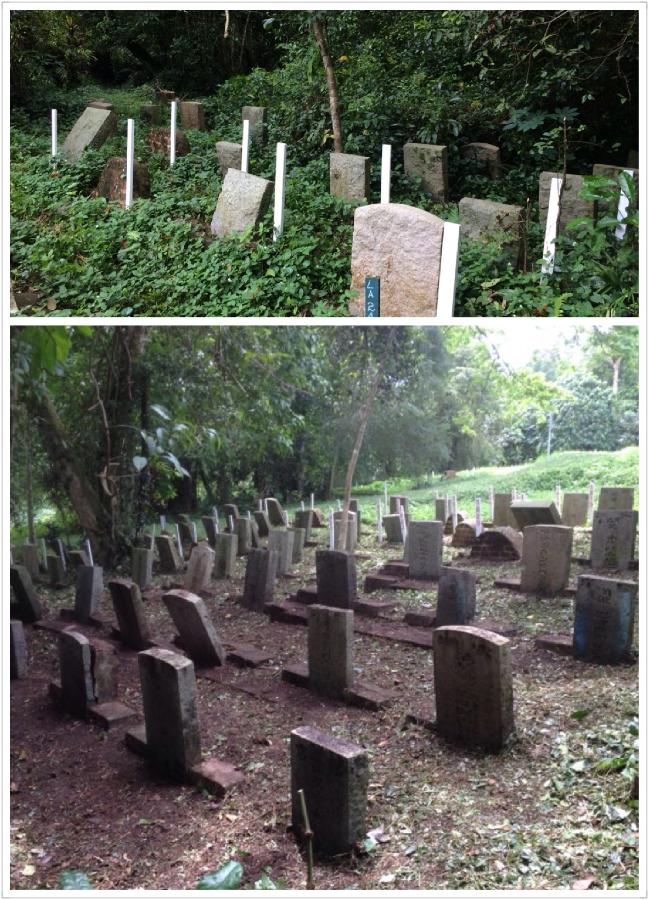

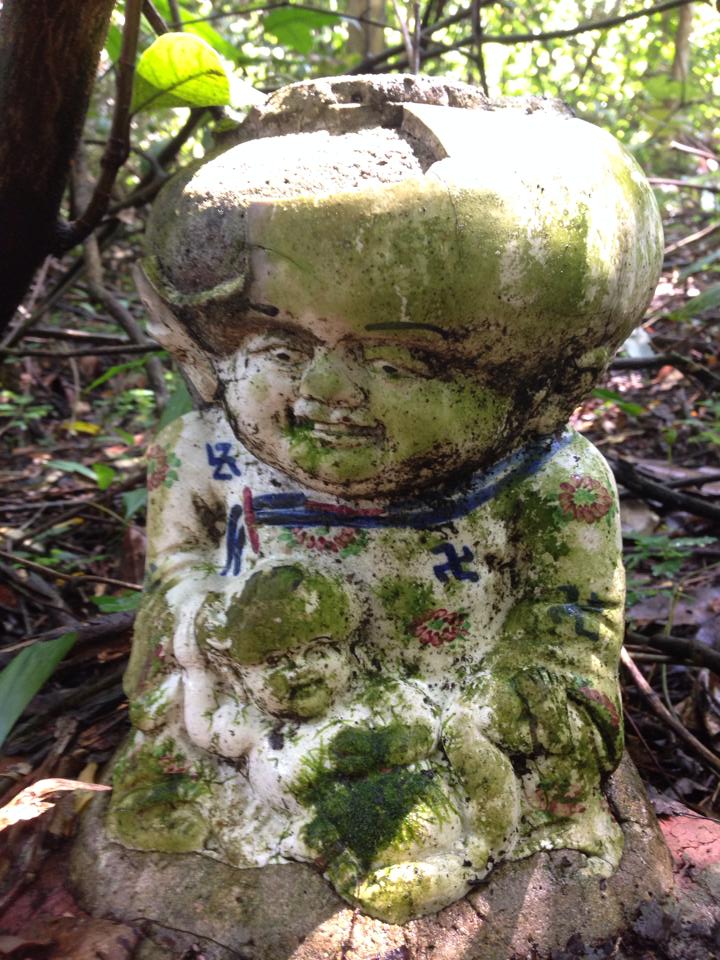

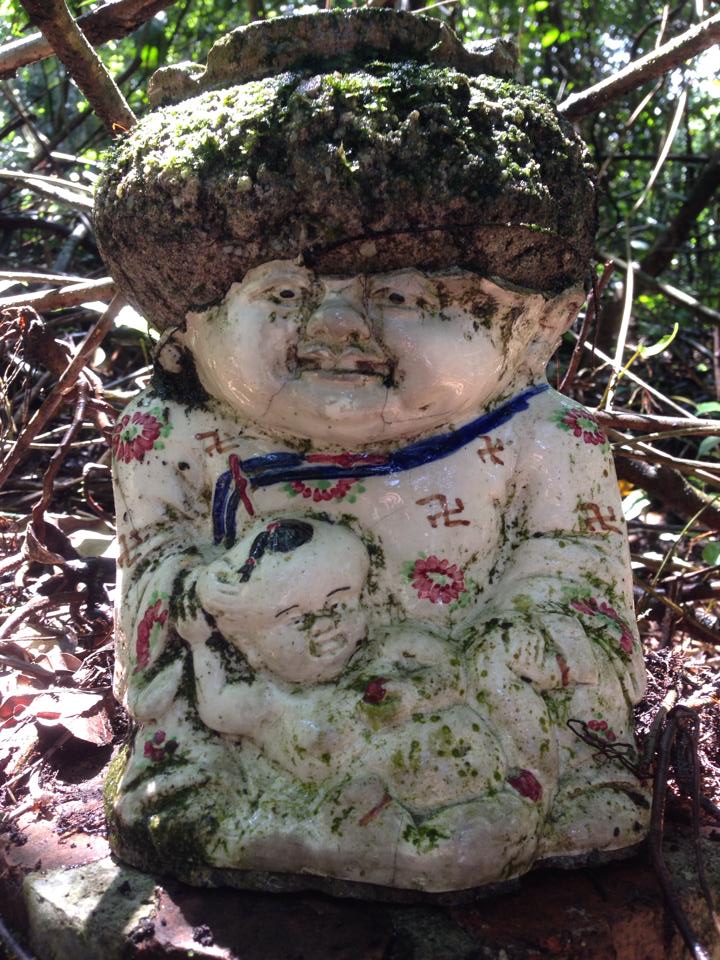
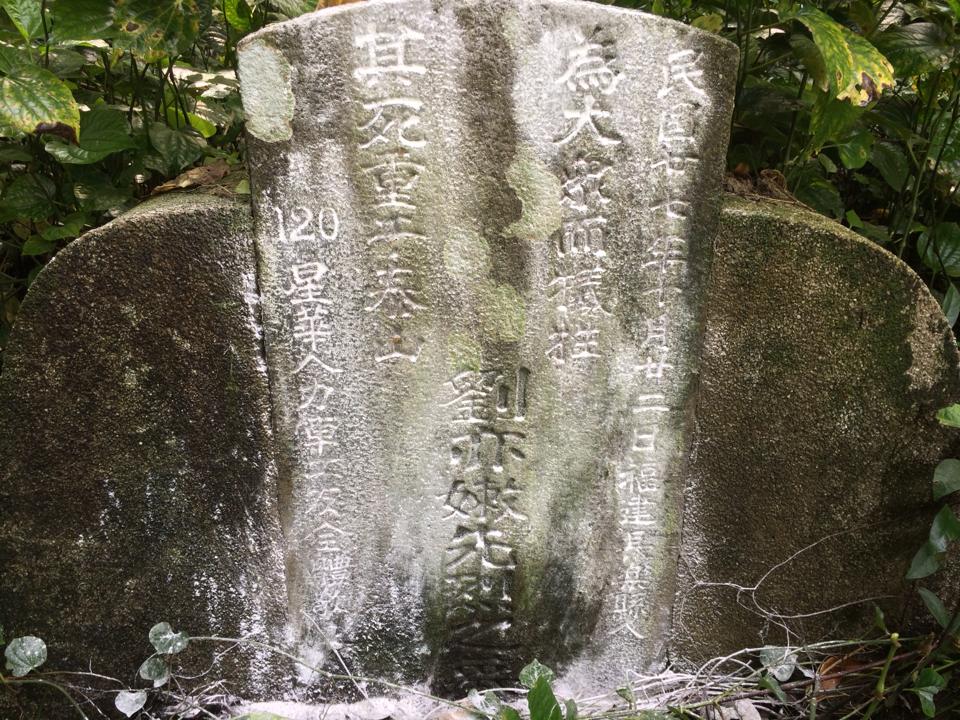
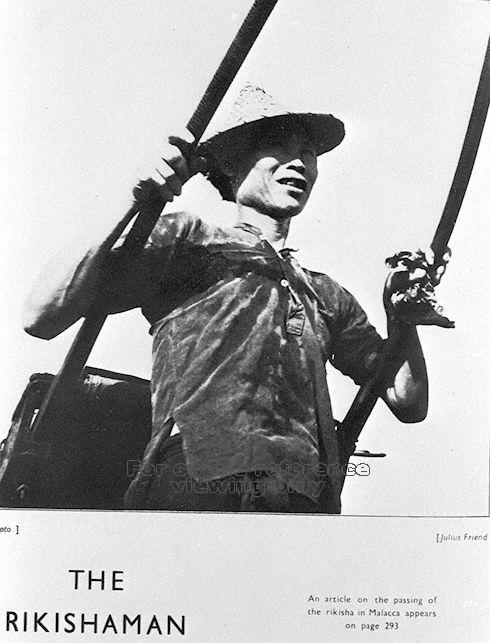
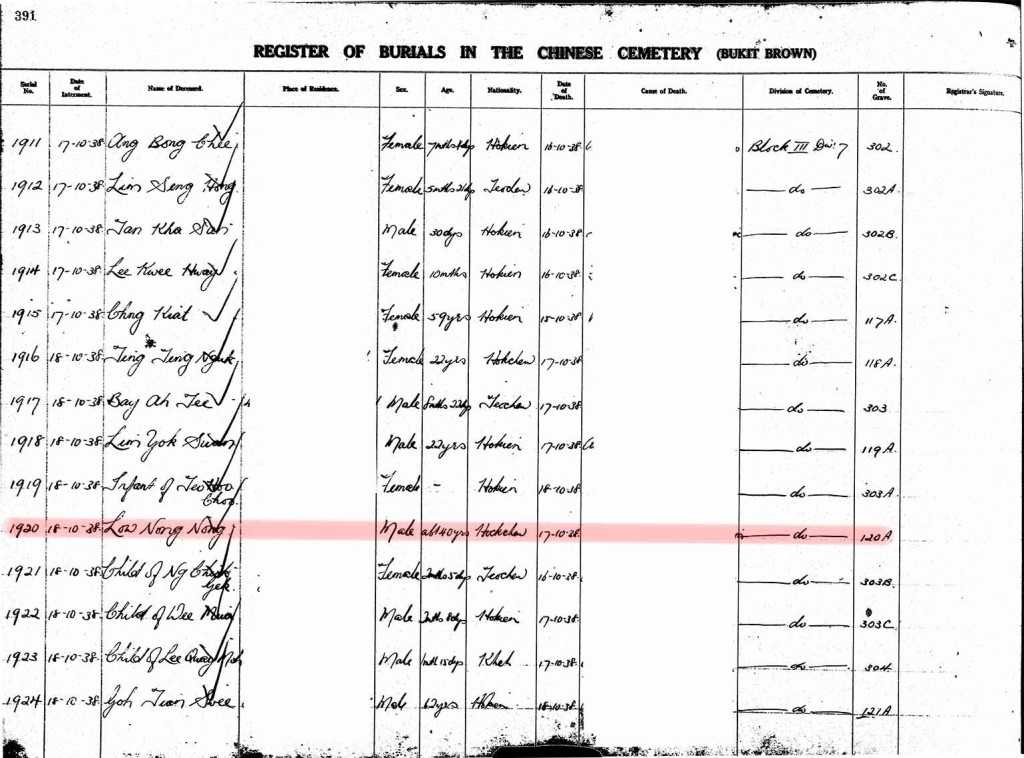
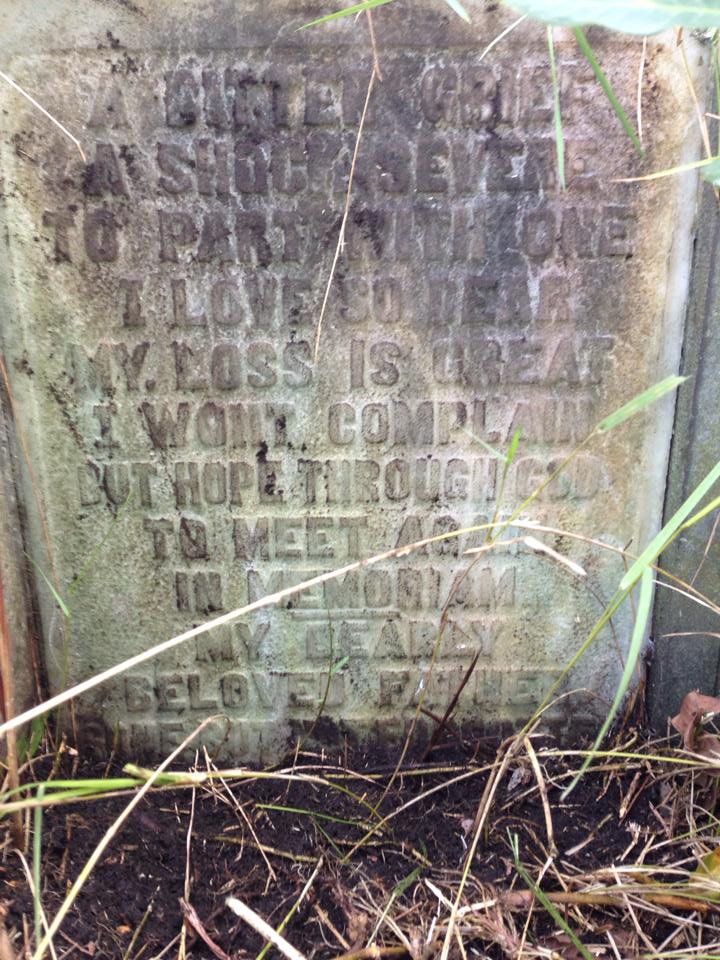
Recent Comments